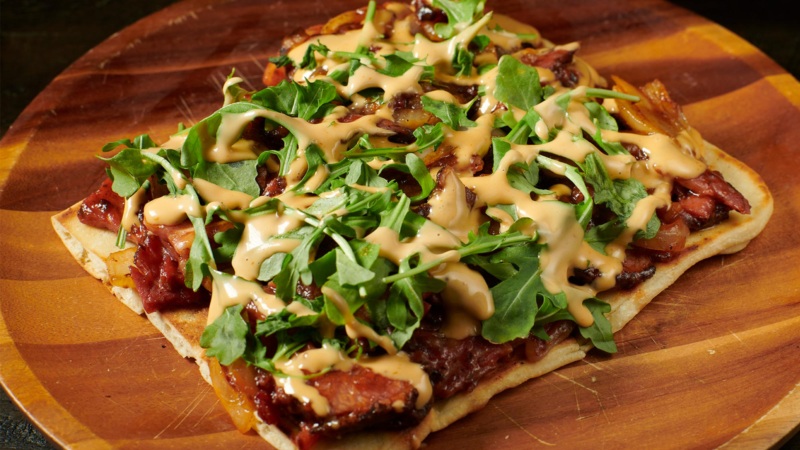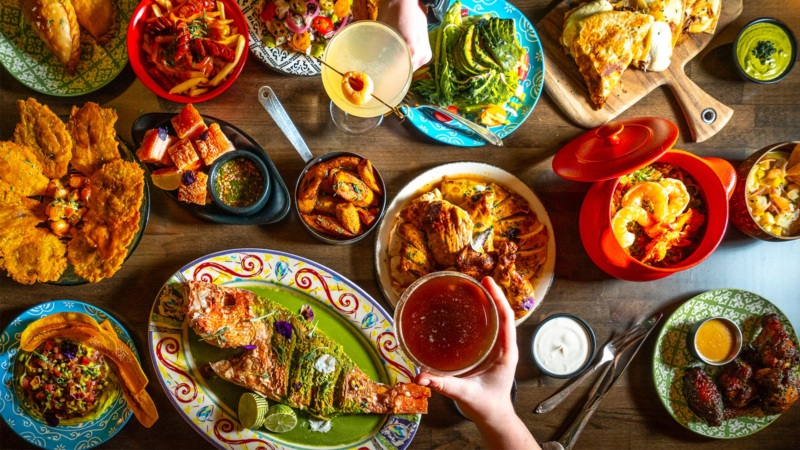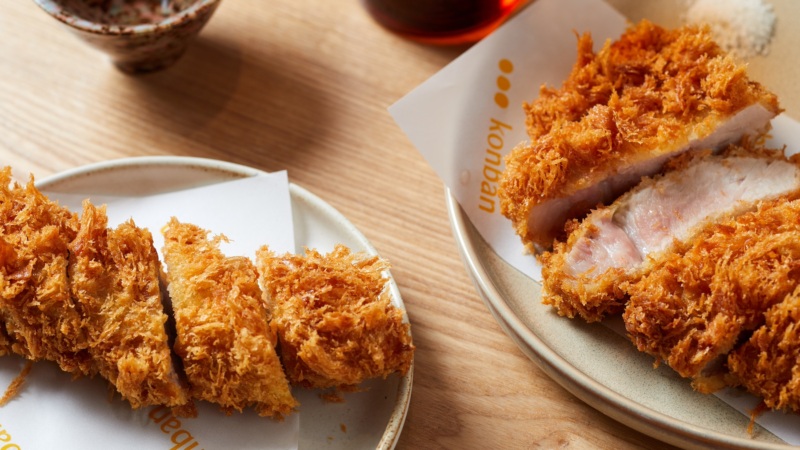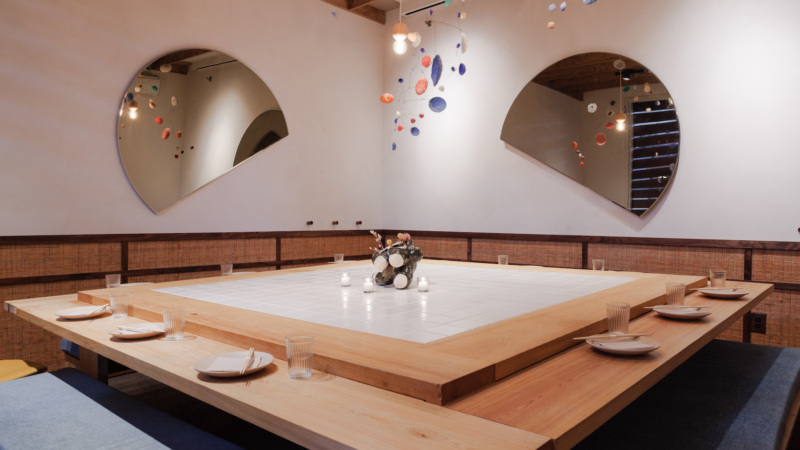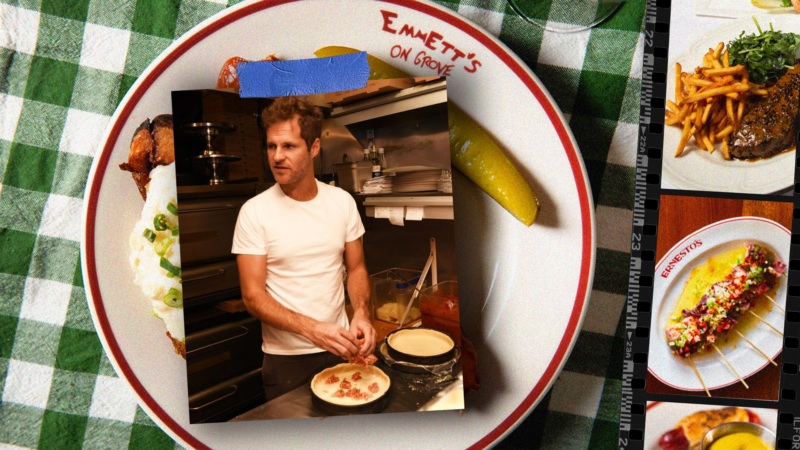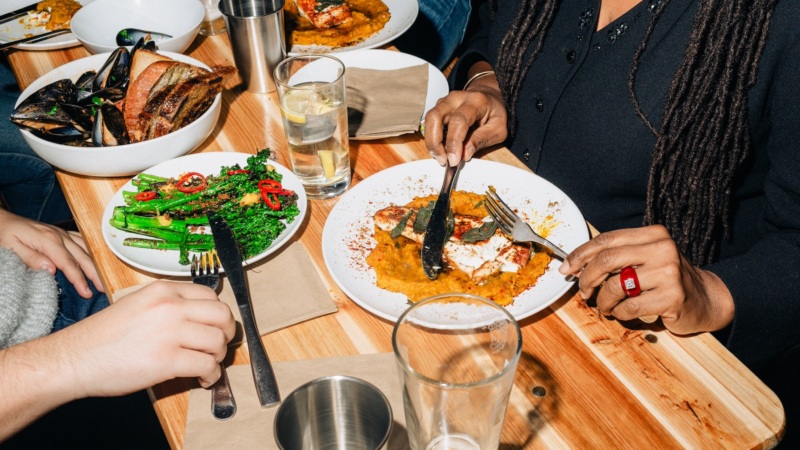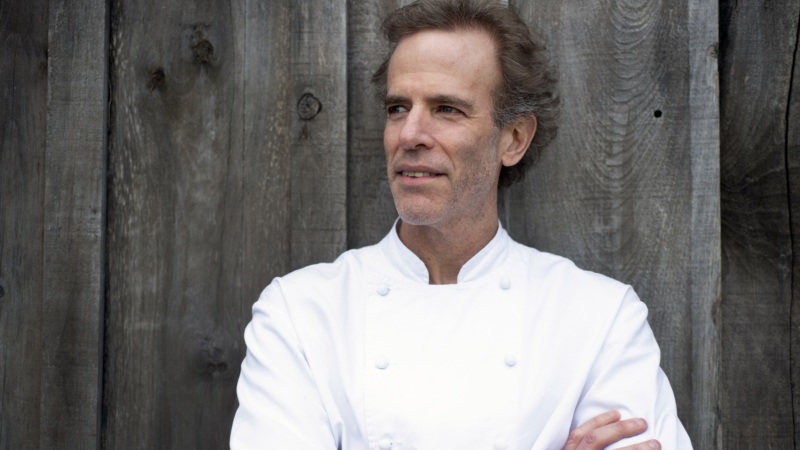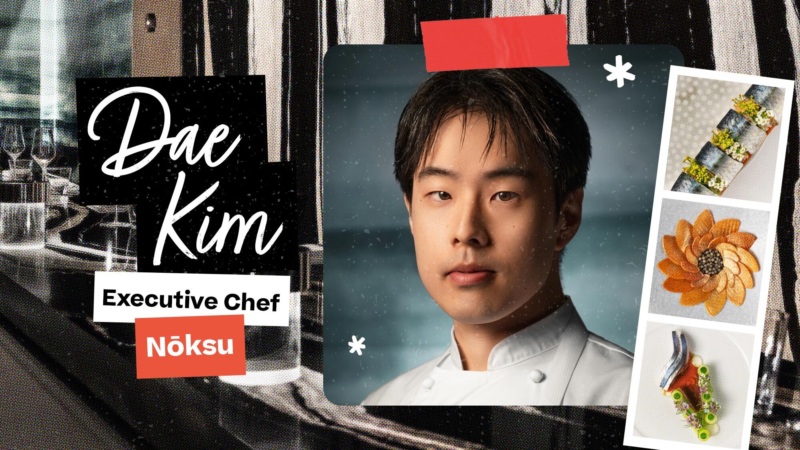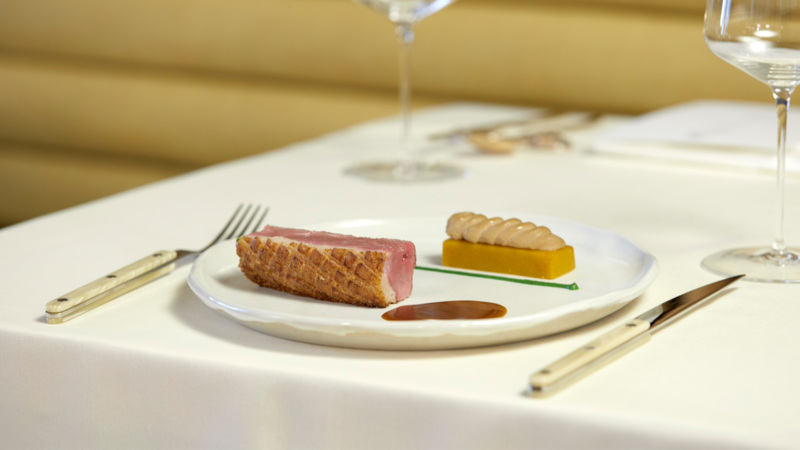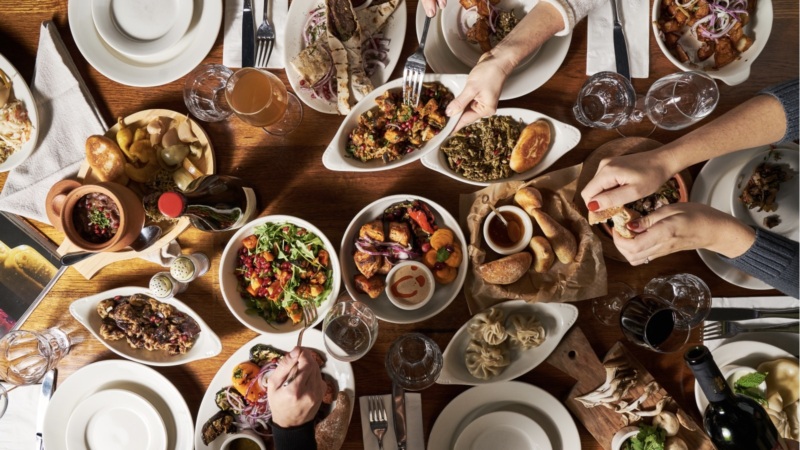
At Sushi Sensation Shuko, R&D Requires Thinking Outside of Japan
Shuko is a New York restaurant above all else. Second, it’s a sushi joint where guests can opt for one of two set meals: omakase or kaiseki. Both meals are inherently traditional. And yet, “traditional is sort of a challenging word. . . it’s 2019” posits Nick Kim, Shuko’s co-chef and partner. Both Kim and his partner, Jimmy Lau, were trained classically as sushi chefs and worked together at Masa. “What Jimmy and I do here is we take our traditional training and then realize where we are, which is New York,” he says. Indeed, the experience at Shuko is driven by the city it exists in, leaving plenty of room for research and development, or in chef’s terms, R&D.
Take it from the restaurant’s two sous chefs, Maximilian (Dino) Taningco and Talal Soufan: New York is nothing if not multicultural. So it’s only fitting that Shuko’s back-of-house team is a diverse crew that gathers inspiration from unexpected places. When the chefs were tasked with coming up with a set of dishes to serve during Off Menu Week, their minds ran wild. The first thing to consider was what produce was being sold at the nearby Union Square Greenmarket and what seasonal ingredients were coming in from their purveyors. “I’m just really in love with vegetables at this point,” Dino, whose resume includes stints at Allswell and The Finch, confesses. Dino often looks to cookbooks to spark ideas, naming Jeremy Fox’s On Vegetables: Modern Recipes for the Home Kitchen as a favorite. Talal, a Jordanian cook, spent time in Japan and then moved to New York last October to work at The NoMad. He had recently returned from a month-long vacation when the discussion of Off Menu Week began, so his creative juices were flowing.
The first dish Dino and Talal developed was eggplant in a cantaloupe curry laced with chili oil, lemongrass, shallots, cilantro, and cucumbers. Dino wanted to explore a sweet curry served cold, like a gazpacho, to keep the concoction “subtle, summery, and really light.” He didn’t think it would work, but it did; they served it to Nick, Jimmy, and the rest of their team, and everyone loved it. Since R&D is something that happens when your work for the day is done, it takes time for the cooks to put together an arsenal of unique ingredients with which to compose their menu. “You’re building your toolbox, basically,” Talal says. Right now his includes a black olive caramel borrowed from Jeremy Fox and a tonnato sauce crafted by another one of Shuko’s cooks. Both are incorporated into Dino and Talal’s take on a tuna niçoise, which contains fresh green beans and suji (grilled toro sinew, a piece of fish that’s popular in Shuko’s sushi course).
Shuko’s cooks are motivated by a hunger for thinking outside of the box. “It’s nice that we have different people from different parts of the world,” Dino says. The benefit of diversity in the kitchen is apparent in a Mexican teammate named Oscar, whose baby corn elote inspired Dino to take a bolder approach. The dish was both creamy and spicy, utilizing romesco instead of cheese and grated macadamia nut. “I’m always looking at my coworkers for different ways of approaching something,” Dino says. Hence another savory dish, which uses goat cheese despite the lack of dairy in Japanese cuisine. Dino thought it would be cool to have something akin to a cheese course, and chose to pair it with sweet pickled beets, grilled corn, shaved carrots, and shreds of nori—a staple in Shuko’s pantry.
But even with the global threads that course through the creations at Shuko, the building blocks of the menu are Japanese. “There’s always Japanese tones in the food,” Talal says. Dino explains: “you’re working with dashi instead of stock, nori instead of salt, miso instead of soy sauce, rice wine for acidity.” The result is food that resonates as distinctly Shuko. “Nick’s challenge for us is not to make it Japanese, [but to] make it work!”


